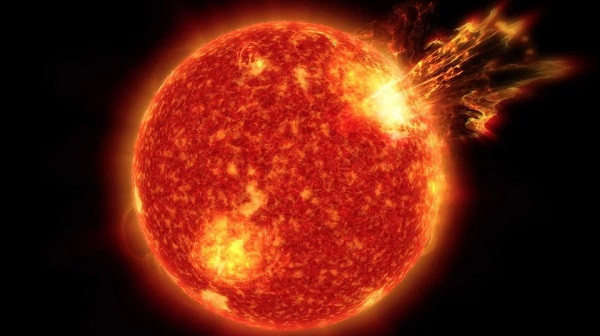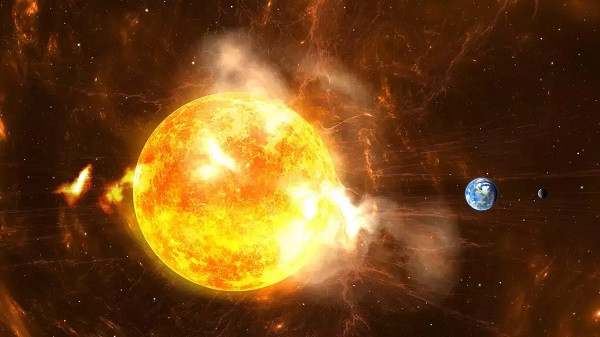NOAA Issues Warning for Solar Storm Today; New Sunspot Raises Concerns of Potential Blackouts

IIE Digital Desk :In a recent announcement, the National Oceanic and Atmospheric Administration (NOAA) has raised concerns about a solar storm expected to impact Earth today. This warning comes as a new sunspot emerges, sparking fears of possible blackouts and disruptions to various technological systems.
Solar storms, also known as geomagnetic storms, occur when the Sun releases a massive amount of energy in the form of solar flares and coronal mass ejections (CMEs). These powerful bursts of energy can send charged particles and electromagnetic radiation hurtling towards our planet. While Earth's magnetic field generally protects us from the majority of these particles, intense solar storms can interfere with power grids, satellite communications, and other electrical systems. The NOAA, responsible for monitoring and predicting space weather events, issued the warning based on observations of increased solar activity. Scientists have identified a new sunspot on the Sun's surface, which is a dark area associated with intense magnetic activity. The emergence of this sunspot suggests a heightened potential for solar flares and CMEs.

If a powerful solar flare or CME reaches Earth, it can induce fluctuations in the planet's magnetic field, leading to geomagnetically induced currents (GICs) in power grids. These GICs can disrupt the normal flow of electricity and potentially overload transformers, causing blackouts and damage to electrical infrastructure. Given the potential risks associated with solar storms, various organizations and industries are closely monitoring the situation. Power companies are implementing precautionary measures to safeguard their electrical grids, and satellite operators are preparing for potential disruptions in communication systems. Additionally, emergency management agencies are reviewing their response plans to address any potential consequences.
It's important to note that while solar storms pose certain risks, they also provide opportunities for scientific research and understanding of our Sun's behavior. Scientists are continuously studying and improving models to better predict the occurrence and impact of these space weather events, enabling us to take necessary precautions and mitigate potential damages.The NOAA's warning about an upcoming solar storm, coupled with the emergence of a new sunspot, has raised concerns about the possibility of blackouts and disruptions to various technological systems. As we continue to rely heavily on technology, efforts to enhance our preparedness and response to such space weather events are essential to minimize potential risks and ensure the resilience of our infrastructure.
You might also like!















